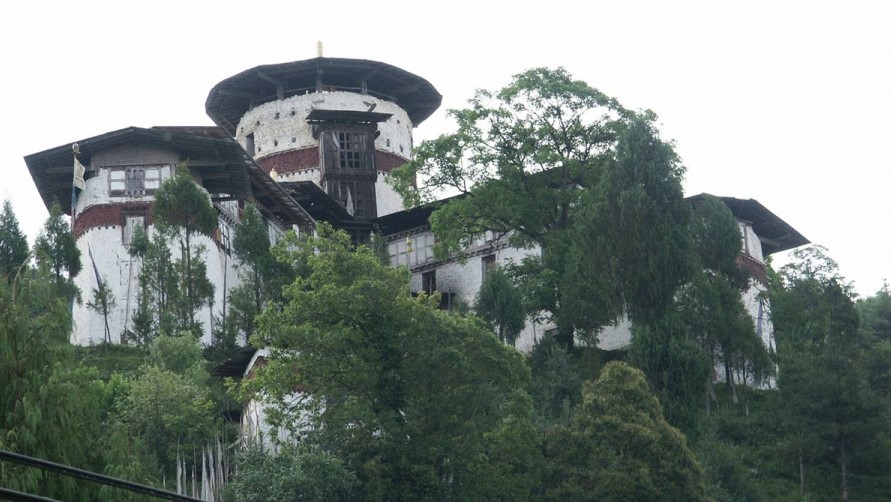Taa Dzong was once a watchtower which guarded the Trongsa Dzong from the internal rebellion. It was built in 1652by the 1st Governor of Trongsa, Chogyal Minjur Tenpa. This magnificent watchtower sits on a spur overlooking the Trongsa dzong and it has four surveillance points resembling the Dragon, The Garuda, the Tiger and the Lion. The Ta Dzong has now been converted into a state-of-art Art Museum (National Museum) with technical and financial support provided by Austria. As of date the Tas Dzong of Trongsa is the most fascinating museum of the nation. It comprises of eleven galleries including the one on top. All these galleries showcase different artifacts of the past.
The first gallery showcases Gyelchhen Zhi (the guardians of the four directions), that protects the entrances to monasteries and temples and ward off evil influences from all four directions.
The second gallery houses a statue of Zhabdrung’s grandfather, Ngagi Wangchuk (1517-1554) who founded the Trongsa Dzong in 1543, his jacket and robe, diamond scepter and bell, statues of the Zhabdrung’s father, Tenpai Nima (1567-1619), Zhabdrung Rinpoche and Choegyel Minjur Tenpa, the first Trongsa Penlop and the third Druk Desi. All these icons are responsible in the history of Bhutan, especially in bringing order to the country’s endless civil wars. The establishment of the Trongsa Dzong greatly helped in this endeavor.
The Raven Crown, designed by Lam Jangchub Tsendrue is featured in the third gallery. It was worn by the 1st King of Bhutan, Gongsar Ugyen Wangchuck. It also houses the images of Jigme Namgyel’s protective deity, Tadin (Hayagriva) and Palkhorlo Dompa (Chakrasamvara), a statue of LamJangchub Tsendrue and Nyep Garab Wangchuk (local deity), ceremonial silk textile that belonged to the first King and four chests of Jigme Wangchuck, the 2nd King of Bhutan that were used in the Wangdue Choling palace in Bumthang to store personal belongings of the royal family and the King.
The fourth gallery has the scroll of 3.5 meter oath of allegiance that was signed by the representatives of the clergy during the coronation of second King in 1926. It also showcases Jigme Wangchuck’s prayer book and silver box, the 3rd King Jigme Dorji Wangchuck’s amulet, ivory flask, container for betel, areca and lime, and a zenith radio besides the silk kira and tego of the first Queen Ashi Choden, a sword, gho, scarf and traditional boots belonging to His Majesty the Fourth Druk Gyalpo, a self created Pema Lingpa bronze statue and a wooden phurba (dragger).
The fifth gallery showcases the meaning of the sacred dances including the wheel of life, masks and costumes while the sixth gallery is about Buddhism and rituals with the images of Buddha Shachamuni, Maitreya Buddha (Gyaltsab Jampa, also known as the future Buddha), Dorji Phurpa (Vajrakila) and a magic dragger.
A Khesar Ling lhakhang is on the seventh gallery and the statues of Guru Rinpoche, His eight manifestations in the eighth and Maitreya Buddha lhakhang in ninth gallery.
The five Tathagata Buddhas (Gyalwa Rignga) sit in the tenth gallery. Each of the Buddhas represent one of the five transcendental insights, which are antidotes to the five mental poisons; anger and hatred, pride, desire and greed, envy and jealously, delusion and ignorance.
The top gallery showcases the body, the speech and the mind of the Adibuddha. It also houses a sacred image of Sung Joenma Dorji Chang, self-spoken Vajradharna.


